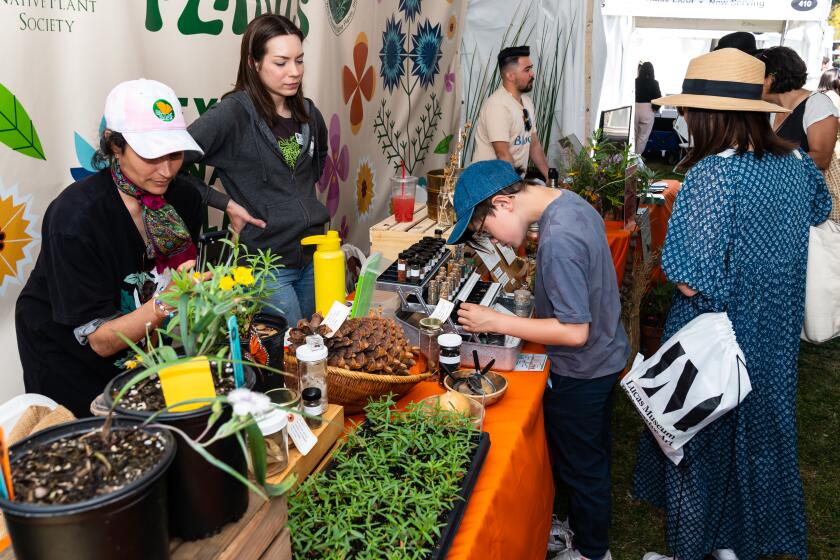
18 ways to volunteer with native plants in and around L.A.
- Share via
One of the easiest ways to learn about California native plants is volunteering to get your hands dirty.
There are numerous nonprofit organizations devoted to protecting and/or restoring habitat in Southern California’s fire- or invasive-weed-ravaged hills, and they rely on volunteers to help them with a variety of chores, from seeding and potting to planting native seedlings in the field.
Basically, if an organization refers to a habitat restoration project, chances are excellent the work involves native plants — collecting native seeds, transplanting seedlings, planting those seedlings in the wild and removing invasive weeds that threaten them.
Habitat restoration is labor-intensive, time-consuming work, but it’s also a great way to get hands-on lessons from the botanists who spend their days trying to shore up our indigenous animals by rebuilding what’s been lost to wildfire, development and fast-growing non-native plants like black mustard.
Planning your weekend?
Stay up to date on the best things to do, see and eat in L.A.
Those jobs are also a way to scratch an itch to work with plants, even if you don’t have a traditional yard. Barbara Chung, for instance, has only a tiny 7-by-12-foot patio at her Santa Monica townhouse, but she still created a habitat garden with more than 100 native plants in pots that regularly hosts hummingbirds, bees and other pollinators, inspired by her volunteer work with habitat restoration organizations like TreePeople, the Santa Monica Mountains Fund Native Plant Nursery and Theodore Payne Foundation.
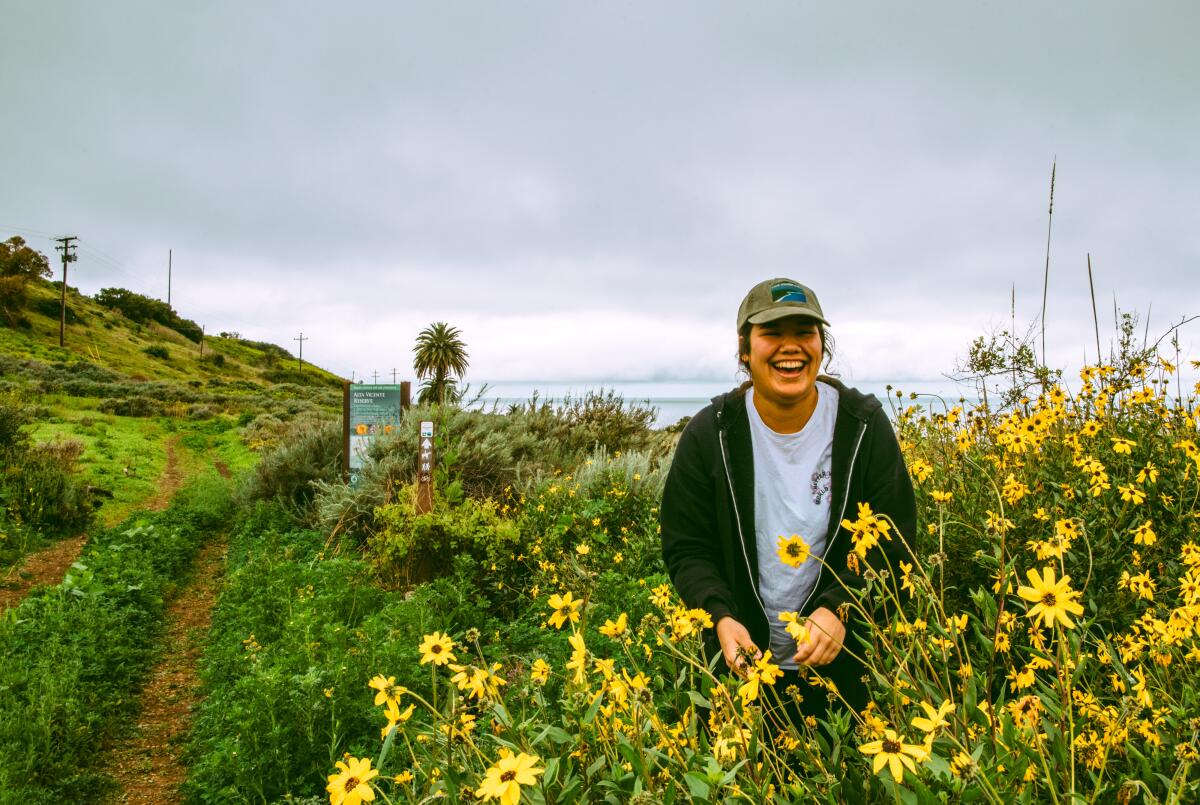
Her habitat work also inspired Chung to become a certified naturalist, publish a native plant fairy tale and ultimately pursue a law degree to help environmental causes. There are other less life-changing but still lovely benefits too, Chung notes, because some organizations, such as the Santa Monica Mountains Fund, give volunteers a few plants to take home after two hours of work.
L.A. Times Plants, the Theodore Payne Foundation and the California Native Plant Society team up to offer an immersive introduction to native plants at Festival of Books.
Here’s a list of some of the top organizations in Southern California looking for volunteers to help with habitat restoration with native plants. But other nonprofit organizations may need help with labor-intensive projects, so if you know of a group that isn’t listed here, call them to see how to get involved. — Jeanette Marantos
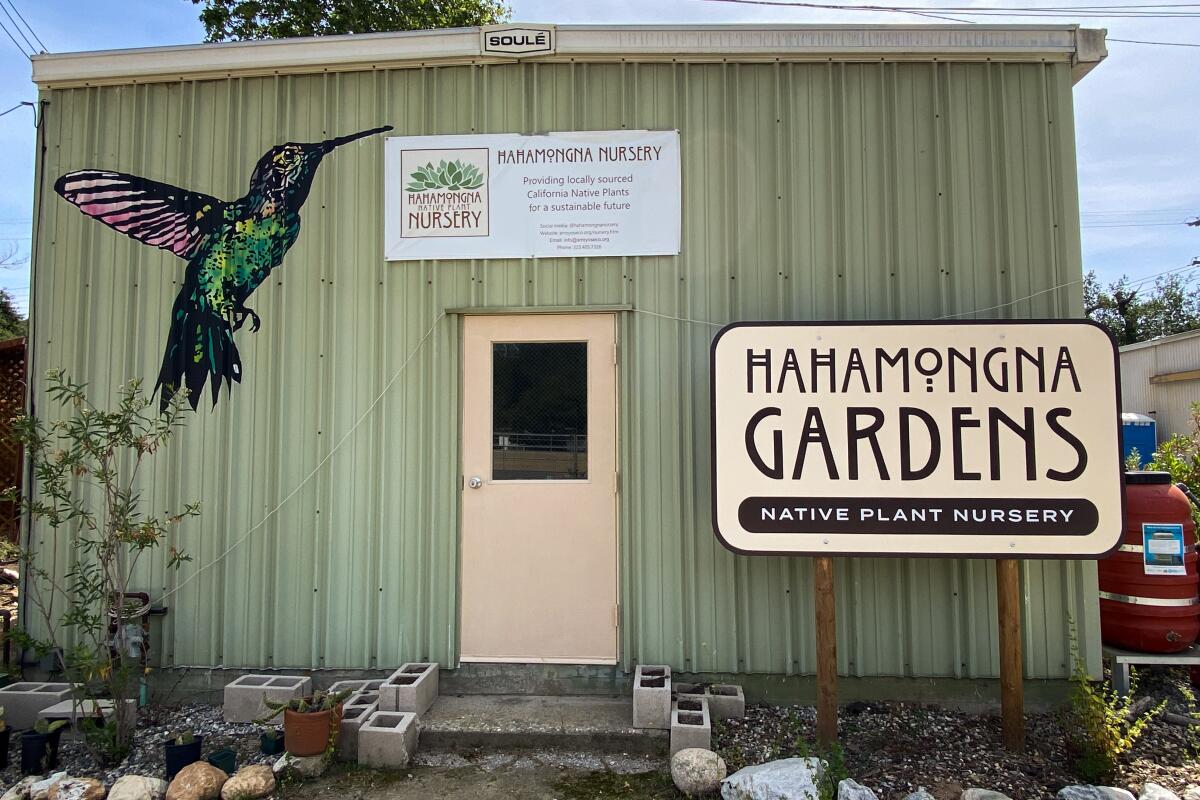
Arroyo Seco Foundation's Hahamongna Native Plant Nursery
“We’re not like a big-box retail store, selling plants to sell plants,” he said. “We try to find out what people need, their space requirements and expectations. We want to help people build habitat and help pollinators.”
The nursery is open five days a week from 9 a.m. to 3 p.m. Wednesday through Sunday. Volunteers — both adults and (supervised) children — are needed for a variety of jobs to help create more plants for the nursery to sell, Suddith said, from collecting, cleaning and sowing native seed to propagating new plants. “Sometimes groups come through — we just had a Scout troop here a couple weeks ago — so we try to tailor our jobs for all skill levels, depending on the group or individual.”
Pre-registration is required for all volunteers through the Arroyo Seco Foundation’s volunteer form. The surrounding grounds have plenty of mature native plants, so volunteers can see what those seedlings in the pots will look like once they grow to maturity. Plus, getting to the nursery is a scenic adventure that requires driving through the oak-strewn Hahamongna Watershed Park, past a youth camp and surrounding stables, into a serene little spot full of birdsong, equestrian whinnies and the constant scuttle of lizards and busy ground squirrels. It’s definitely a lovely place to learn about native plants.
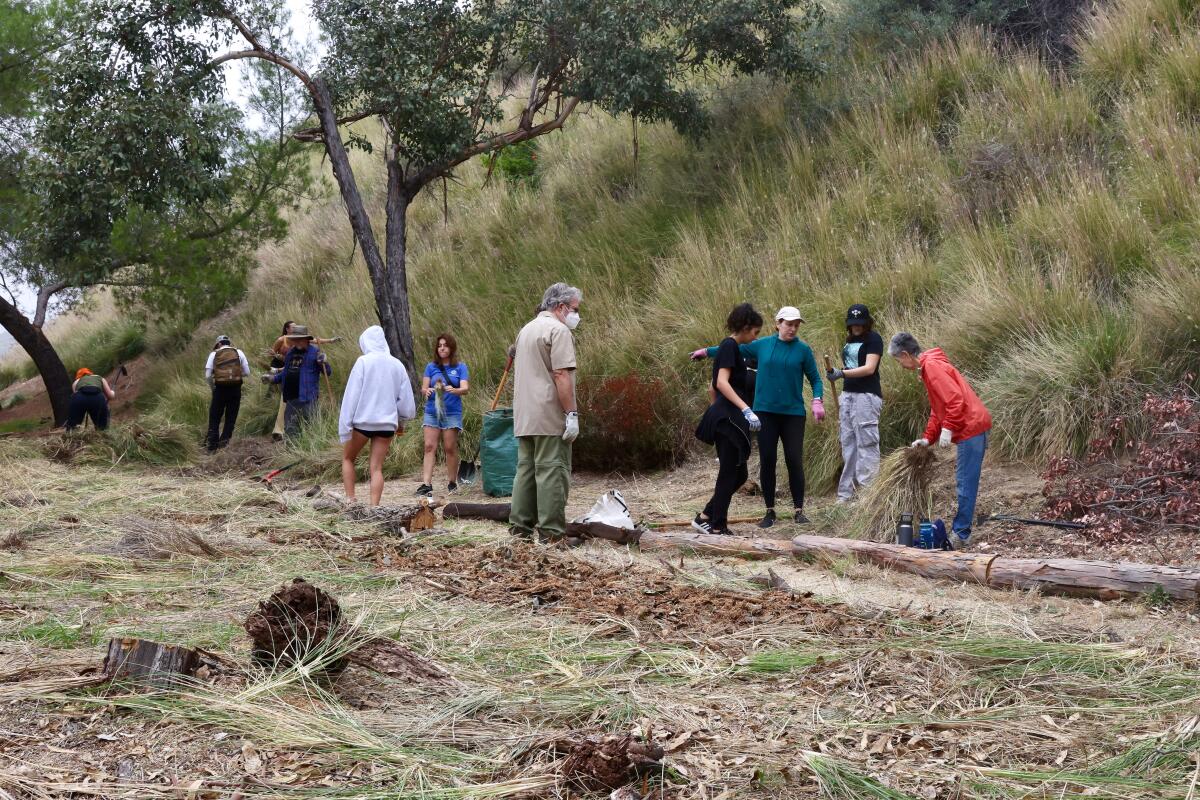
Arroyos & Foothills Conservancy
But with only a small staff, it depends on volunteers to maintain these sites, and a key part of the work is establishing local involvement to help projects have long-term success. The group hosts volunteer events almost every week, including habitat restoration and trail maintenance. This could mean weeding out unwanted invasive plants like fountain grass or mustard, spreading mulch to suppress weeds and putting in native plants. Arroyos & Foothills Conservancy also offers opportunities to help with wildlife cameras or to learn about leading educational field trips with students at the conservancy’s sites.
Volunteer events occur at various locations. The address listed is the site with the most frequent events.
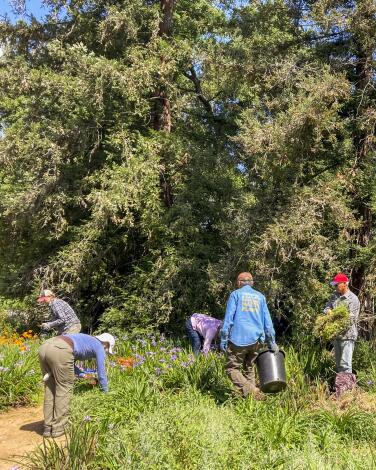
California Botanic Garden
California Botanic Garden offers many ways for volunteers to learn about the state’s indigenous flora, from leading tours to weeding or pruning in the gardens, mounting plant specimens in the herbarium, assisting in the nursery with plant cultivation and care, or even creating native plant bouquets for garden events.
Volunteers must fill out an application to work at the garden, complete a background check and fingerprinting, become a member ($50 a year for individuals) and attend an orientation within six months of starting their work.
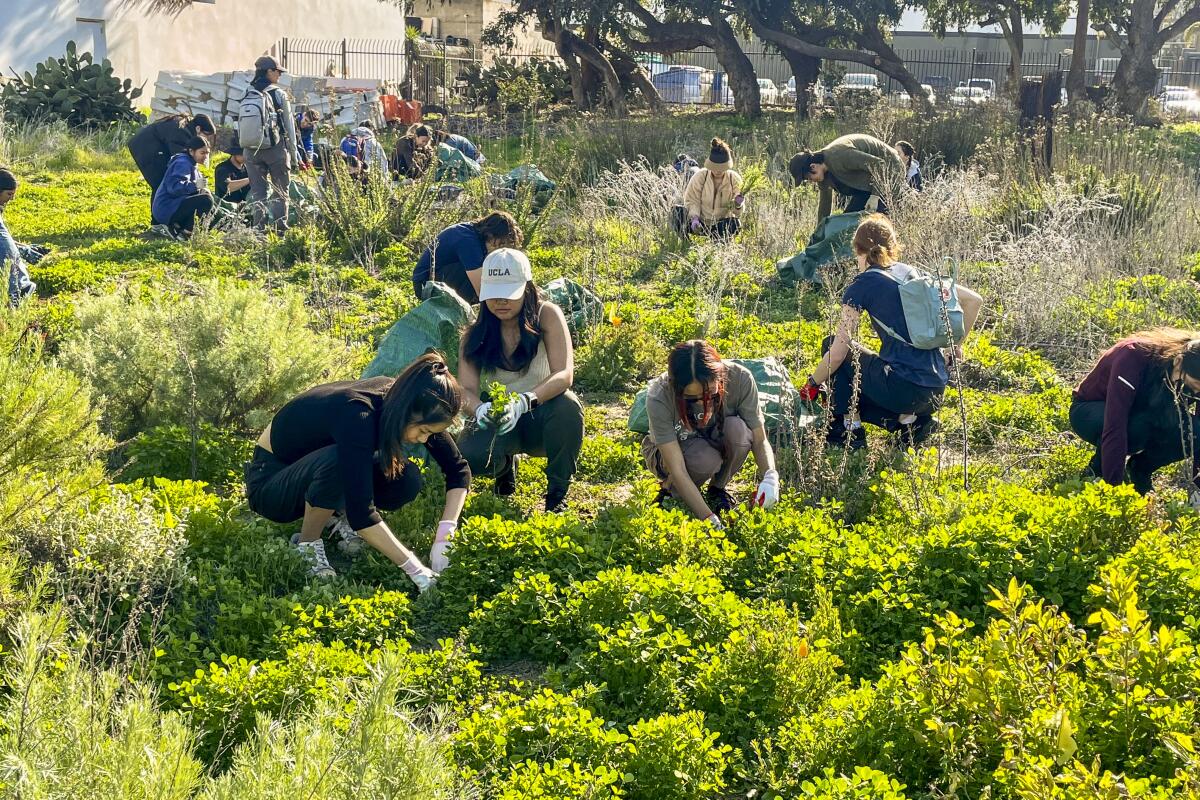
Friends of Ballona Wetlands
The Friends of Ballona Wetlands hosts multiple volunteer opportunities every month including cleanup and restoration events. Volunteers can expect to help with removing non-native vegetation, planting trees and shrubs and removing trash. With a staff of eight people, Friends of Ballona depends on volunteers to achieve its goals.
Volunteer events occur at various locations. The address listed is the main one for the wetlands.
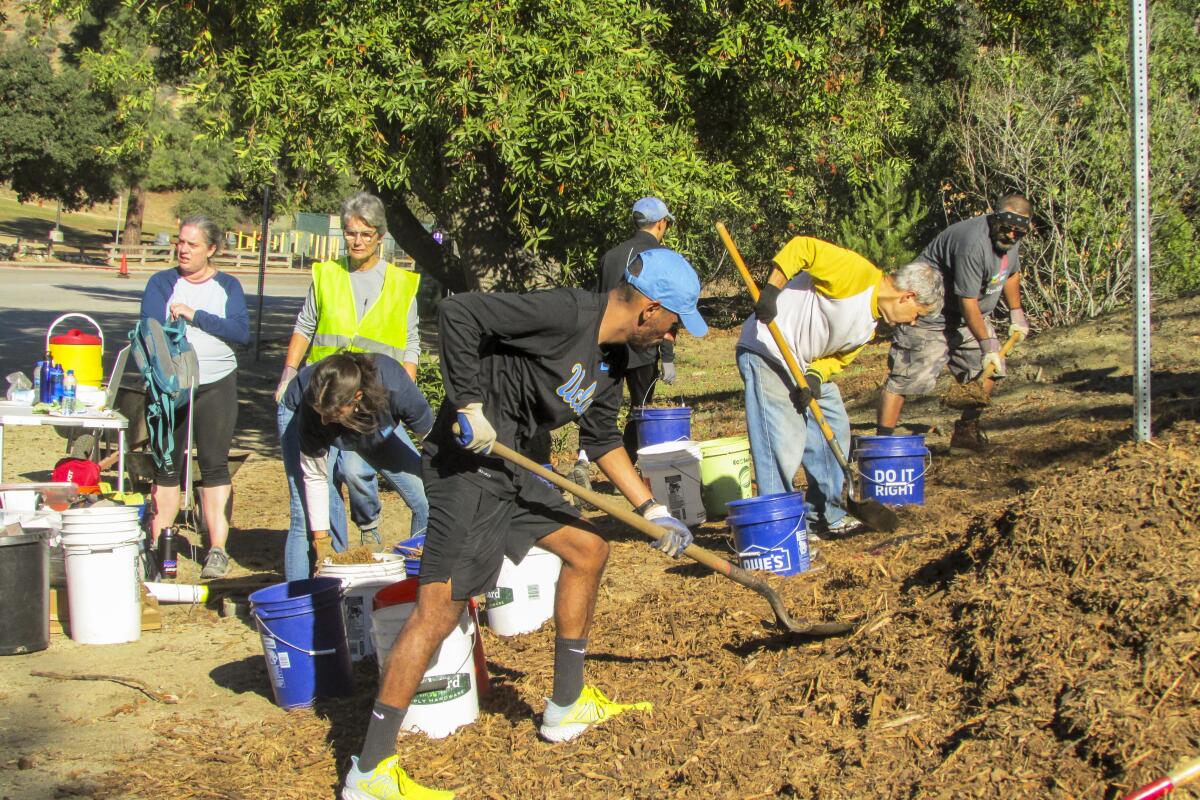
Friends of Griffith Park
The Friends of Griffith Park is helping to maintain this vision. Brenda Rees, a veteran volunteer with the group, says volunteer events are joyful and inclusive. She says volunteers “love to be at events like this because we get our hands dirty, feel the breezes and maybe hear the chortling quail or howling coyotes.” The group hosts a few big volunteer days every month that typically involve cleanup around trails, removing invasive plants and restoring habitat areas.
Volunteer events occur at various locations within Griffith Park.
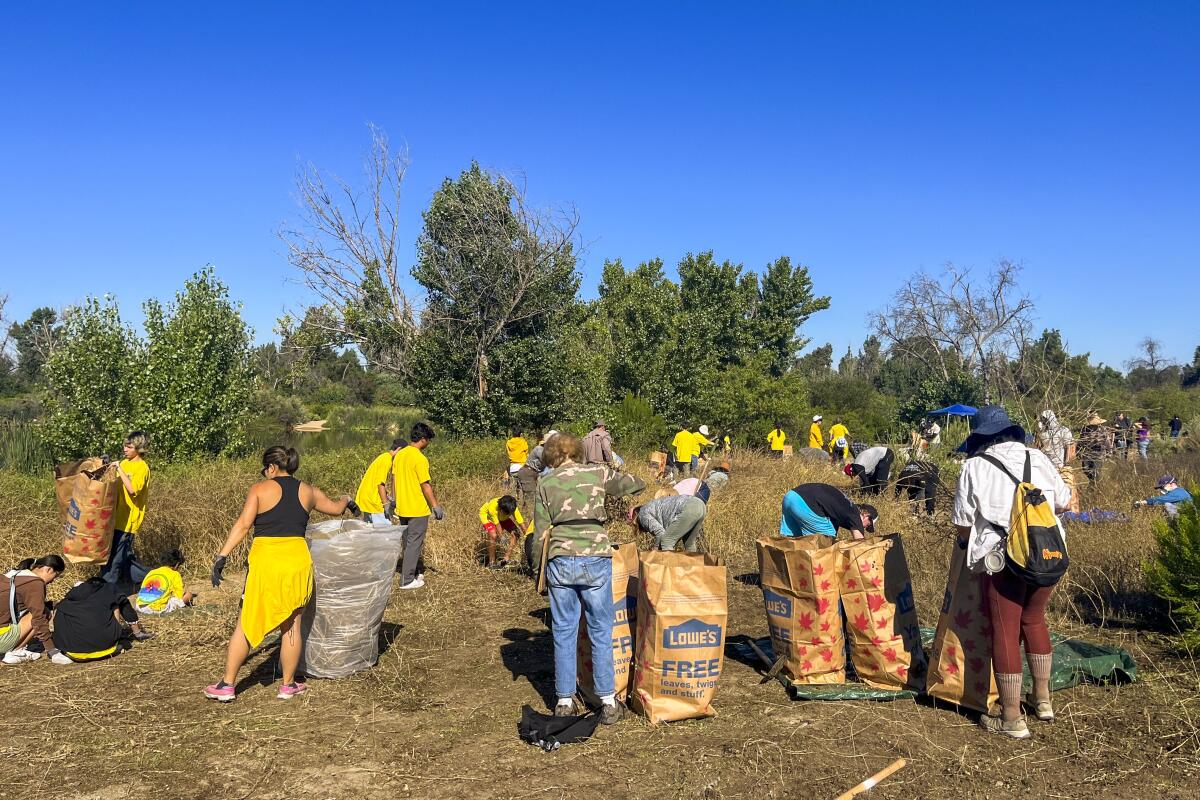
Friends of the L.A. River
Volunteer events occur at various locations. The address listed is for the group’s main office.
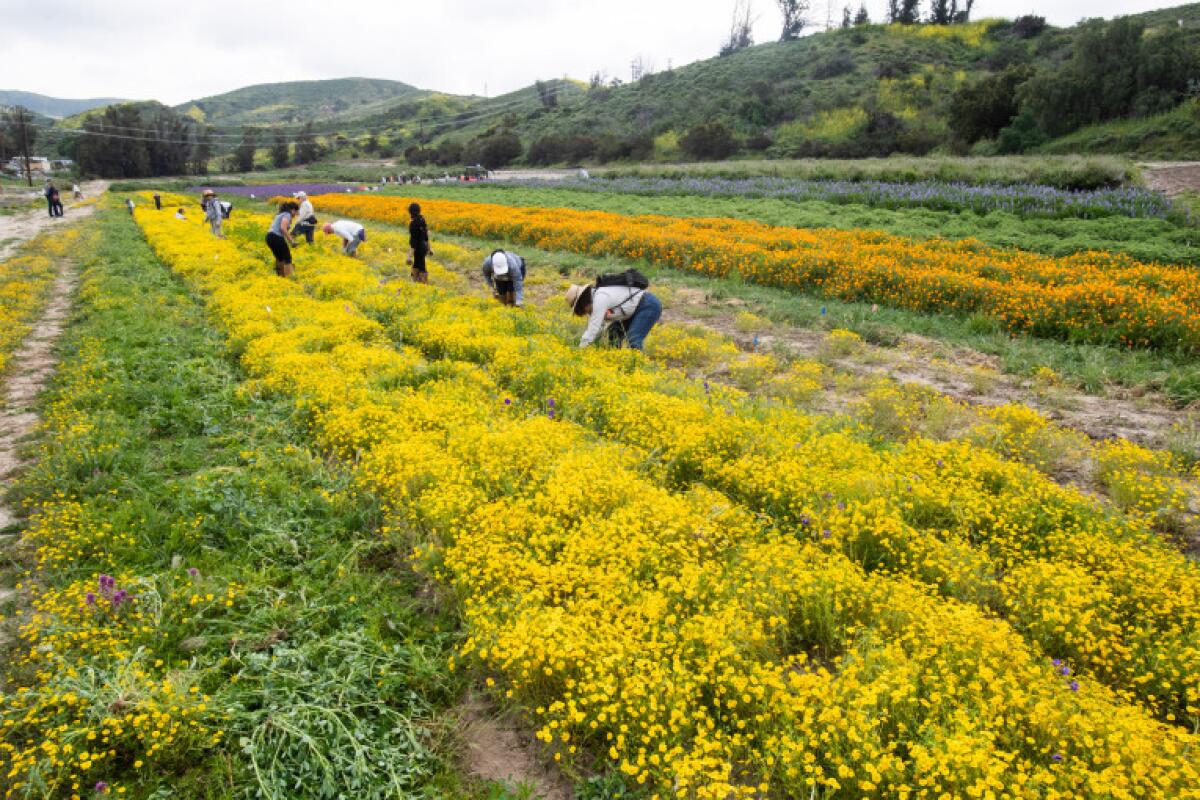
Irvine Ranch Conservancy
It’s a big job, and as such, it has lots of opportunities for volunteers, from group projects to single-day activities as well as advanced training in native plant restoration, control of invasive plants and related topics in its IRC-Certified Volunteers program for adults 18 and older.
The conservancy’s natural resource stewardship projects don’t require any special training, just a willingness to get dirty removing invasive weeds, collecting seeds, studying wildlife and planting native seedlings. Trail crew volunteers are trained to assist in restoration projects as well as maintaining habitats and trails. And the conservancy’s 14-acre Native Seed Farm in Irvine relies on volunteers to gather more than 500 pounds of seeds annually, pull weeds and otherwise care for more than 50 plant species growing at the farm as well as several native plant nurseries that it also manages.
The conservancy also offers multiple projects for ongoing habitat restoration projects every month, such as restoring wildflowers and wildlife in Limestone Canyon Nature Preserve, adding native plants to the Buck Gully Reserve in Newport Beach and caring for young, rare Tecate cypress trees in the Fremont Canyon Nature Preserve.
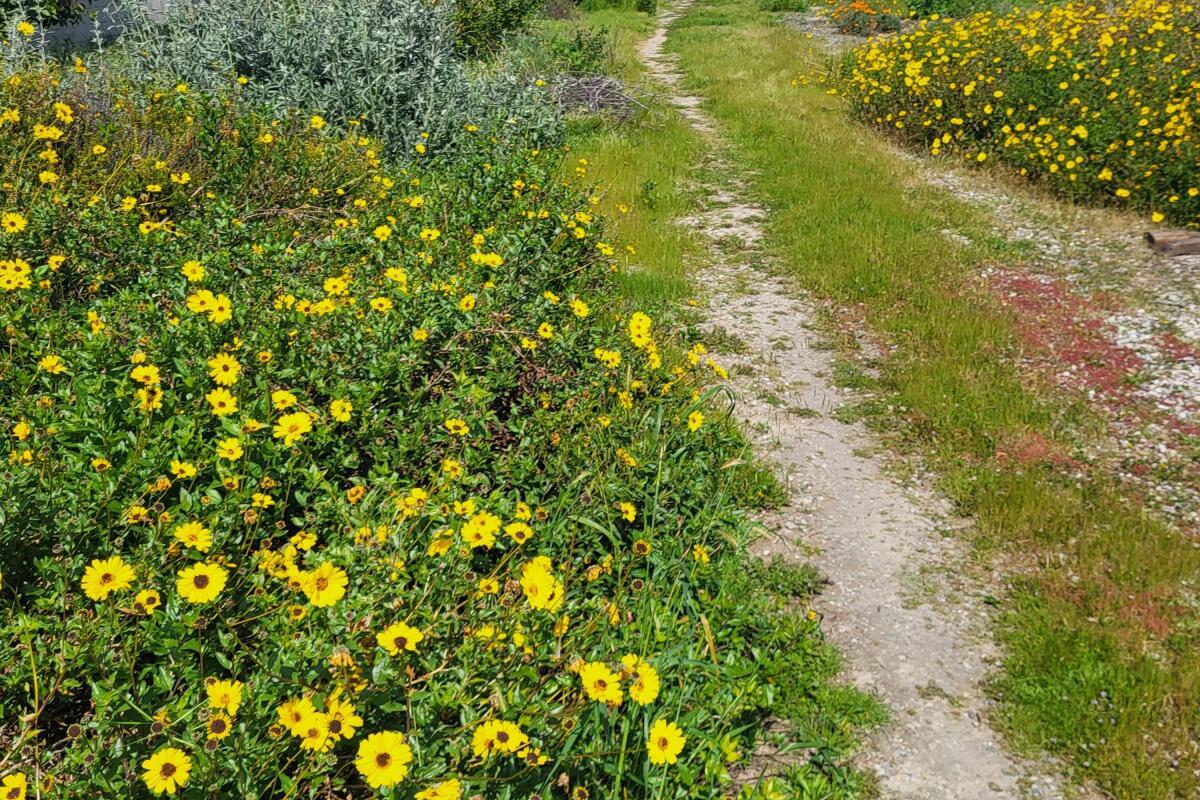
Monarch Nature Trail in Huntington Beach
Now, the first Saturday of every month, from 9 to 11 a.m., they invite volunteers to help weed, spread mulch and restore habitat by planting sages, buckwheat, bladderpod and other native seedlings to attract birds, bees and butterflies, especially the Western monarchs that overwinter in coastal areas, including Huntington Beach.
“The idea is to have beautiful natives growing along both sides of the trail ... to make it a pleasant place to take a walk and enjoy nature,” McMillen wrote in an email. “The areas that have been transformed are so nice compared to the other areas of weeds. It is quite a battle with the weeds until the natives grow large enough to block them out.”
These days, the volunteers also get support from the UC Cooperative Extension Master Gardeners of Orange County, the Orange County Chapter of the California Native Plant Society and the city of Huntington Beach. And people of all ages are welcome to help, McMillen said, even young children (accompanied by adults) who can fill holes with plants or help water the new plants.
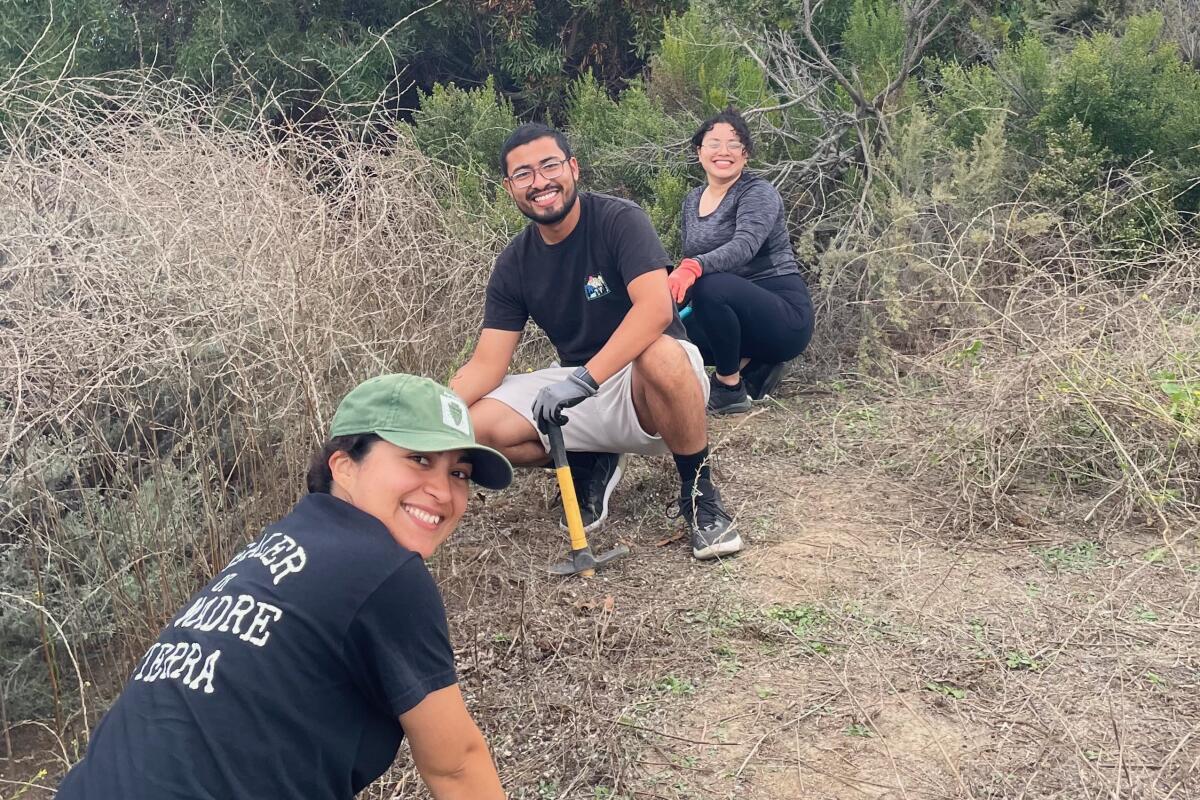
Mujeres de la Tierra
Over the summer, the group led four volunteer projects at Kenneth Hahn State Recreation Area where participants removed invasive weeds and planted California native plants. Volunteers can expect to enrich their environmental knowledge and take on leadership roles.
Volunteer events take place at multiple sites. The address listed is for Mujeres de la Tierra’s office.
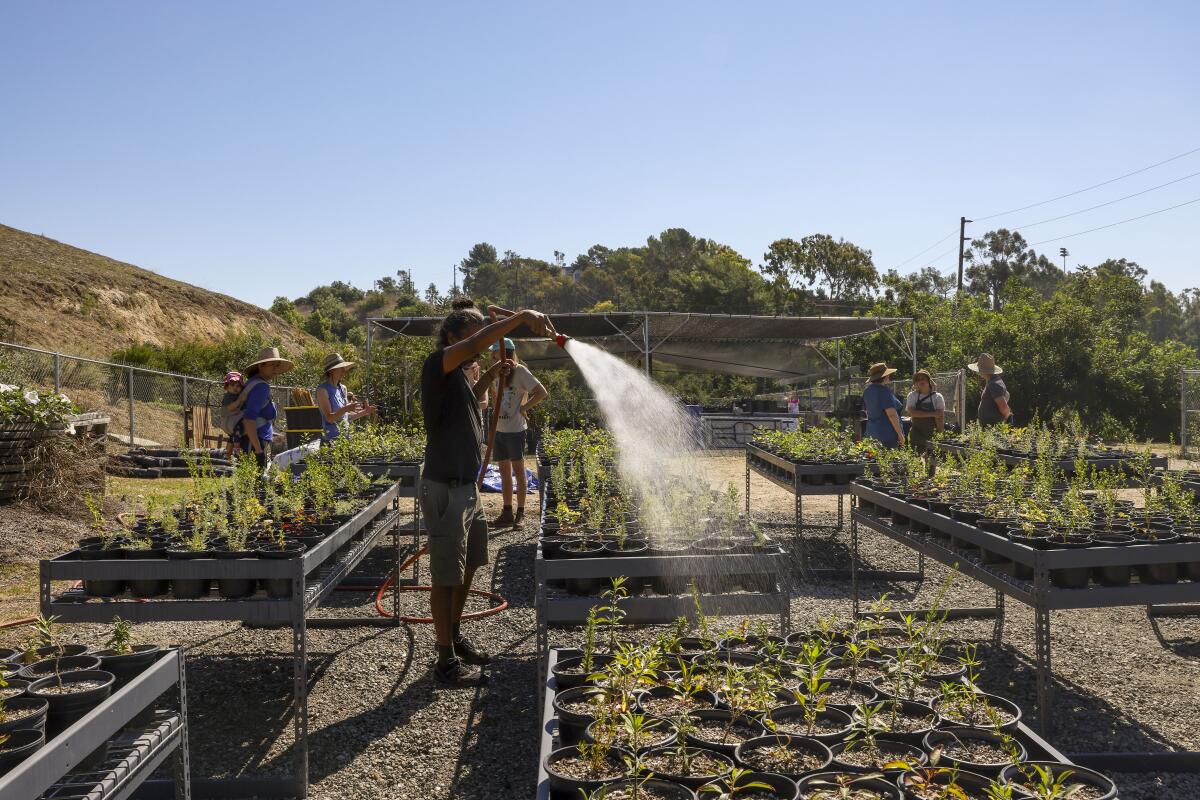
North East Trees
The group restores and maintains a number of sites around Northeast Los Angeles, including at Ascot Hills Park, where its nursery is based, and the nearby Elephant Hill and Flat Top sites. North East Trees is very much a part of its community. Nursery Manager Hannya Ortiz Caldera grew up in nearby Lincoln Heights, and she says that local community involvement is “present and consistent.” She says many volunteers have made the North East Trees nursery their hangout spot and a place where they can decompress — some even find ways to help on their own time once they learn the basics.
Volunteer activities include seed collecting, seed processing and other nursery propagation tasks, as well as habitat restoration work and putting plants in the ground. North East Trees is developing a native plant micro-forest at Ascot Hills Park, a project involving a number of aspects of habitat restoration, which volunteers can learn about. North East Trees also helps local youth acquire skills to gain employment in green jobs. It promotes volunteer opportunities with other local organizations through its website as well.
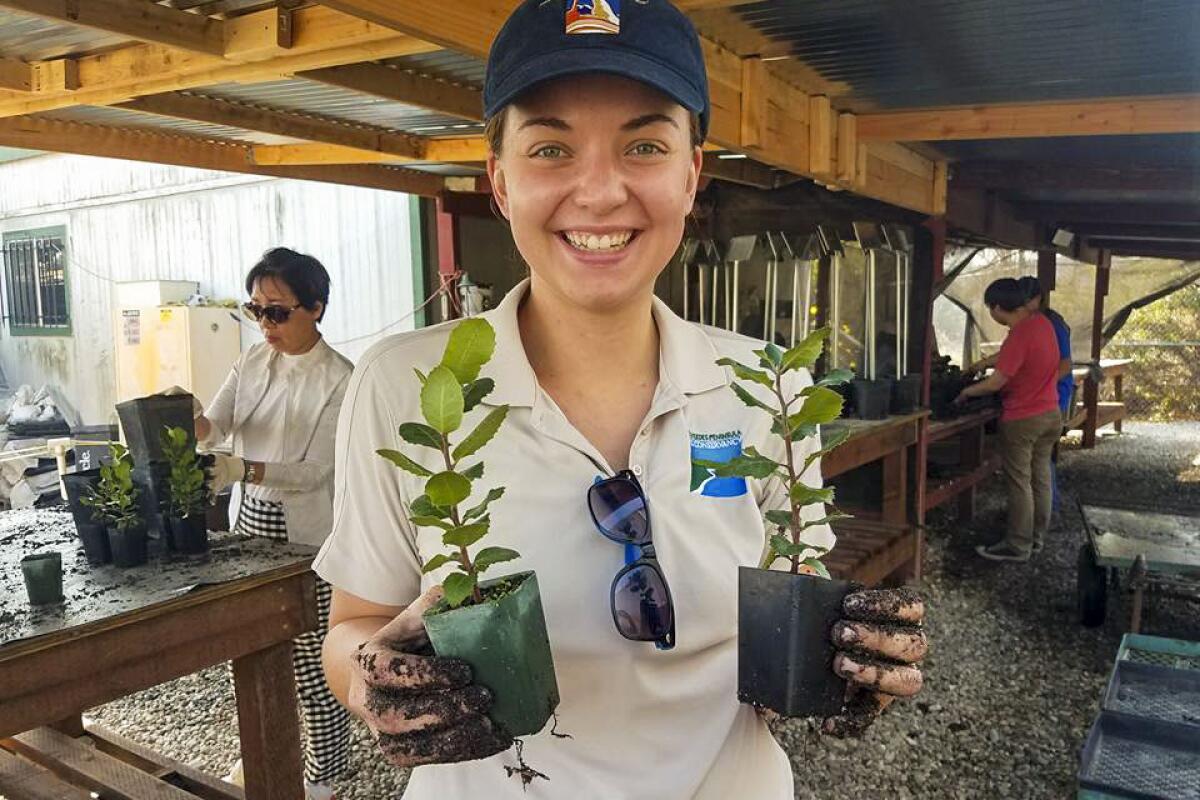
Palos Verdes Peninsula Land Conservancy
The Palos Verdes Peninsula Land Conservancy has worked since 1988 to preserve the history and ecology of open spaces in the area, and it now counts 1,600 acres under its stewardship. Volunteer program manager Lynn Rotunno says she is “inspired every day by our volunteers and their commitment to us.” First-timers can come out for weekly restoration and trail maintenance events. There are also opportunities for growing plants in the nursery and wildlife monitoring. Hikers who frequent the area can learn how to report trail damage so repairs can be made.
Volunteer events occur at various locations. The address listed is for the conservancy’s main site.
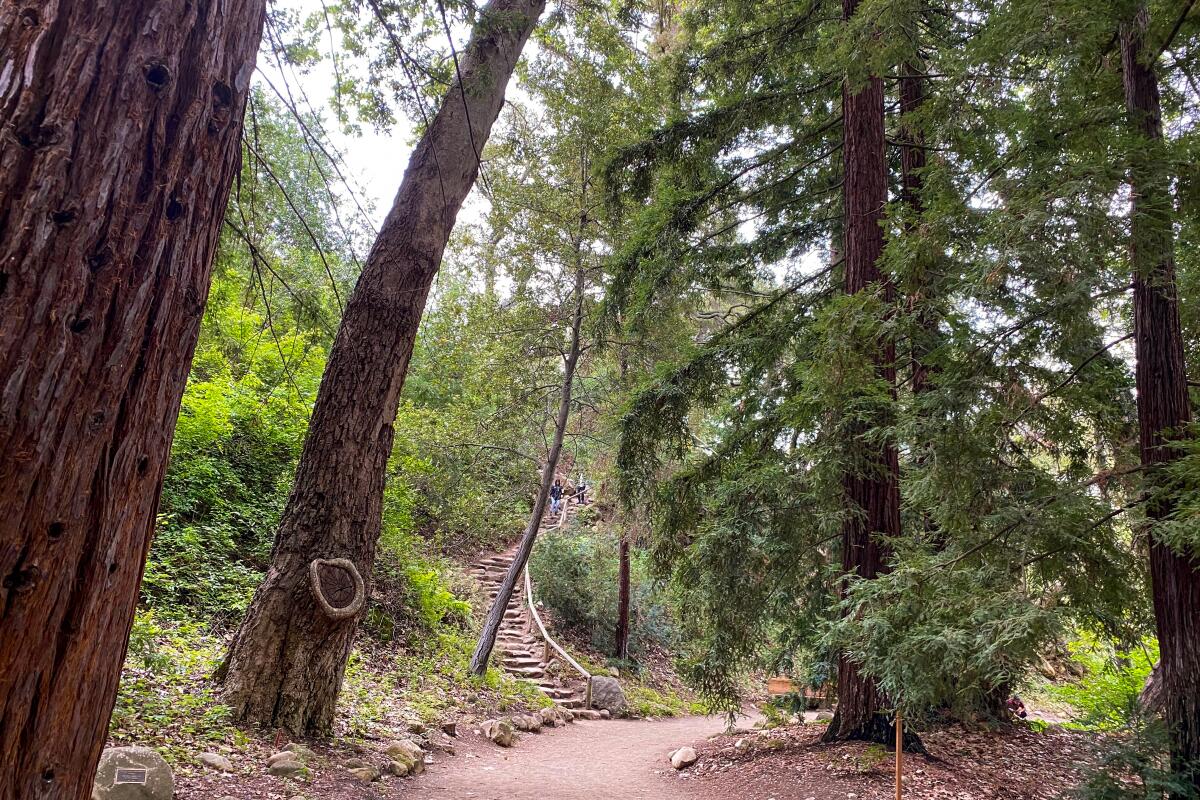
Santa Barbara Botanic Garden
Among the many opportunities, volunteers can sign up for the “Hort Unit” to learn about propagation of native plants and the garden’s seed bank; work shifts in the garden itself, weeding, pruning, mulching and otherwise tending to plants; or work in the garden’s nursery to learn about the care and techniques for growing native plants.
Volunteers aren’t required to become members (although most are, said Kathy Castaneda, the garden’s manager of volunteer programs), but there aren’t many drop-in opportunities to help at the gardens. Because they must be trained to work in their chosen areas, volunteers are expected to make at least a three-month commitment of time to come in weekly or at least a few times a month, she said.
The garden also is organizing volunteers to help restore and maintain native plants at Elings Park and other locations as part of its five-year project to rebuild habitat with native plants in public gardens and open spaces throughout Santa Barbara County.
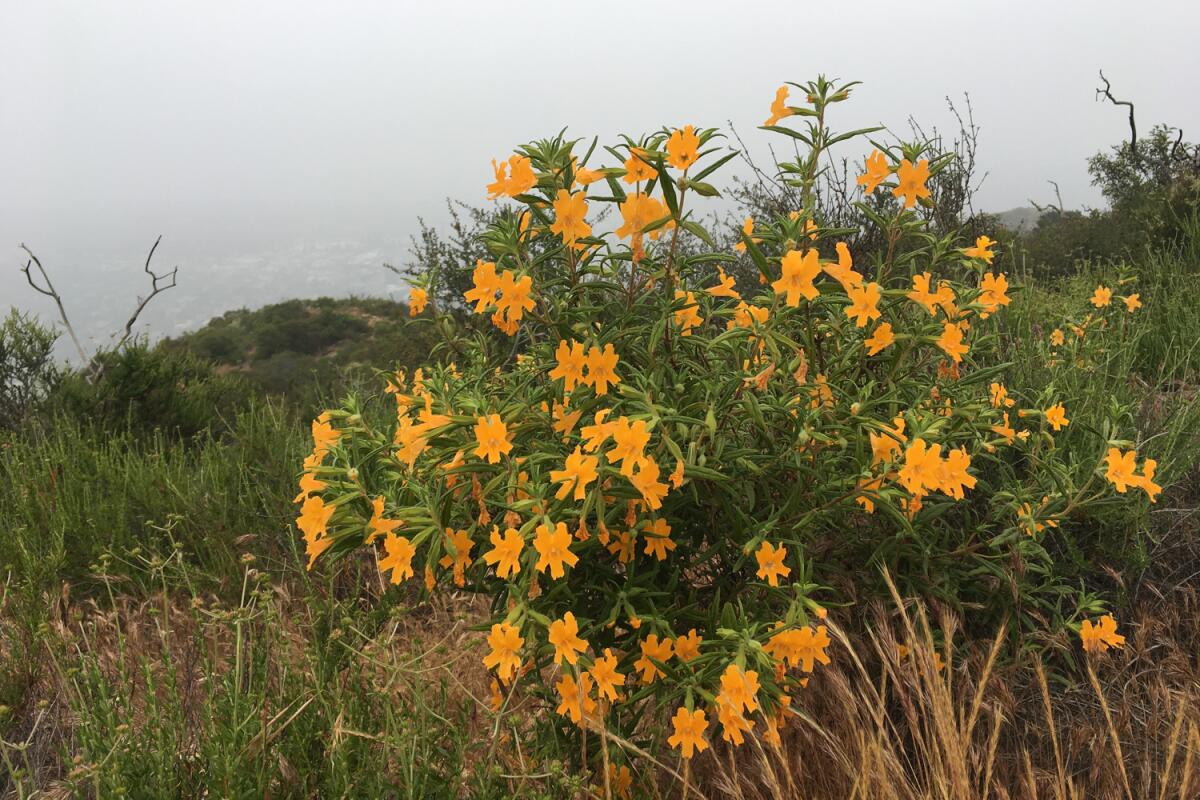
Santa Monica Mountains Fund Rancho Sierra Vista Native Plant Nursery
Bonus point: If you put in at least two hours of work between noon and 4 p.m. on Free Plant Thursdays, you can take home three plants for free. Propagation Thursdays from 9 a.m. to noon are best suited for volunteers who want to improve their native plant horticulture skills. The tasks focus on one or two native plant species every week, such as milkweed, sages, manzanitas, dudleyas and monkeyflowers, with activities such as preparing plant cuttings, transplanting rooted cuttings into containers, creating and applying soil mixes and fertilizers and cleaning recent conservation seed collections.
The nursery also offers free workshops on a variety of plant topics, so sign up for its newsletter to find out about upcoming events.
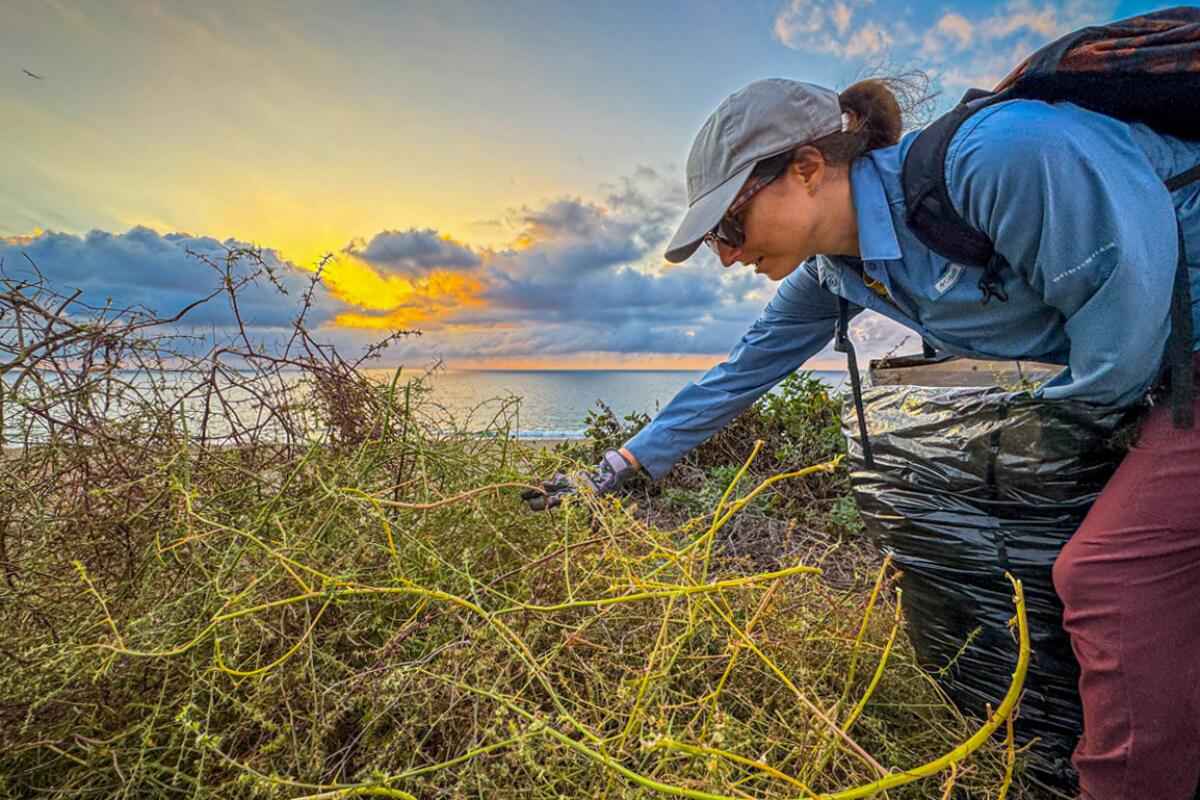
South Bay Parkland Conservancy
The conservancy has regular workshops that are monthly opportunities for volunteers to learn about native plants, wildlife and gardening while helping to restore and maintain sites such as the Esplanade Bluff, Hermosa Valley Greenbelt, Hopkins Wilderness Park and Redondo Beach Community Garden. The conservancy also offers guided nature walks in Hopkins Wilderness Park every month for children and adults discussing topics such as birds, pollinators and plant reproduction. Even its website is a revelation, with beautiful photos and names of plants native to the region.
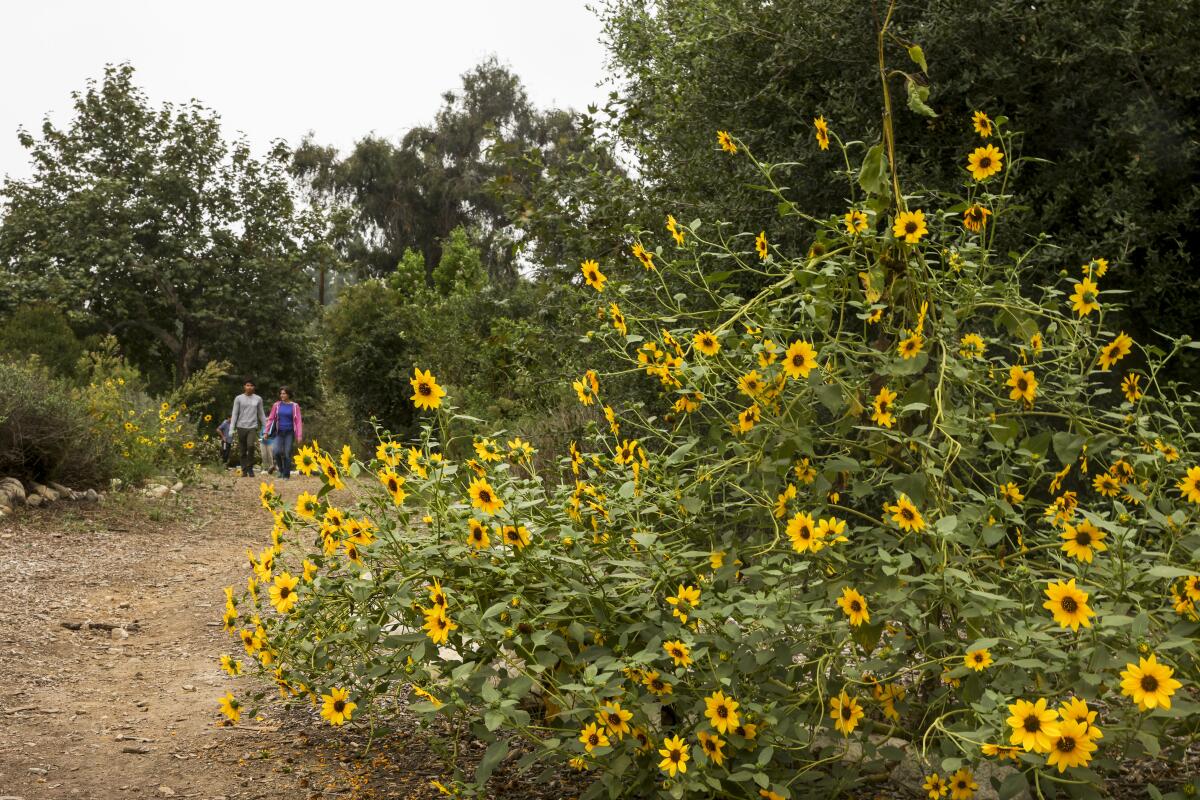
South Pasadena Nature Park
Volunteer days happen once a month. Cleanup, weeding, pruning and mulching are typical activities, but participants may also clear trails or engage in other special projects. Eisenstein says volunteers may have unique skills they can contribute. For example, volunteer Monica Kelly grows milkweed at home and started a butterfly garden at the nature park. She also educates visitors on the importance of milkweed for the monarch butterfly. Community is key at the South Pasadena Nature Park and it is likely something volunteers will learn how to foster.

Theodore Payne Foundation
The staff and community at Theodore Payne are incredibly knowledgeable when it comes to gardening with native plants in Los Angeles, so it is a great educational opportunity. It has regularly occurring volunteer days every week, as well as bigger project events that occur from month to month. One of the most intriguing aspects of the nursery is that it is situated within a lovely native plant showcase garden.
Volunteers can expect to help out with typical garden chores such as weeding or planting, but there are also opportunities to learn about things specific to the plant nursery, such as collecting seeds or propagating plants. Theodore Payne also partners with other organizations for volunteer days at sites like the Rio de Los Angeles State Park and the Audubon Center at Debs Park.
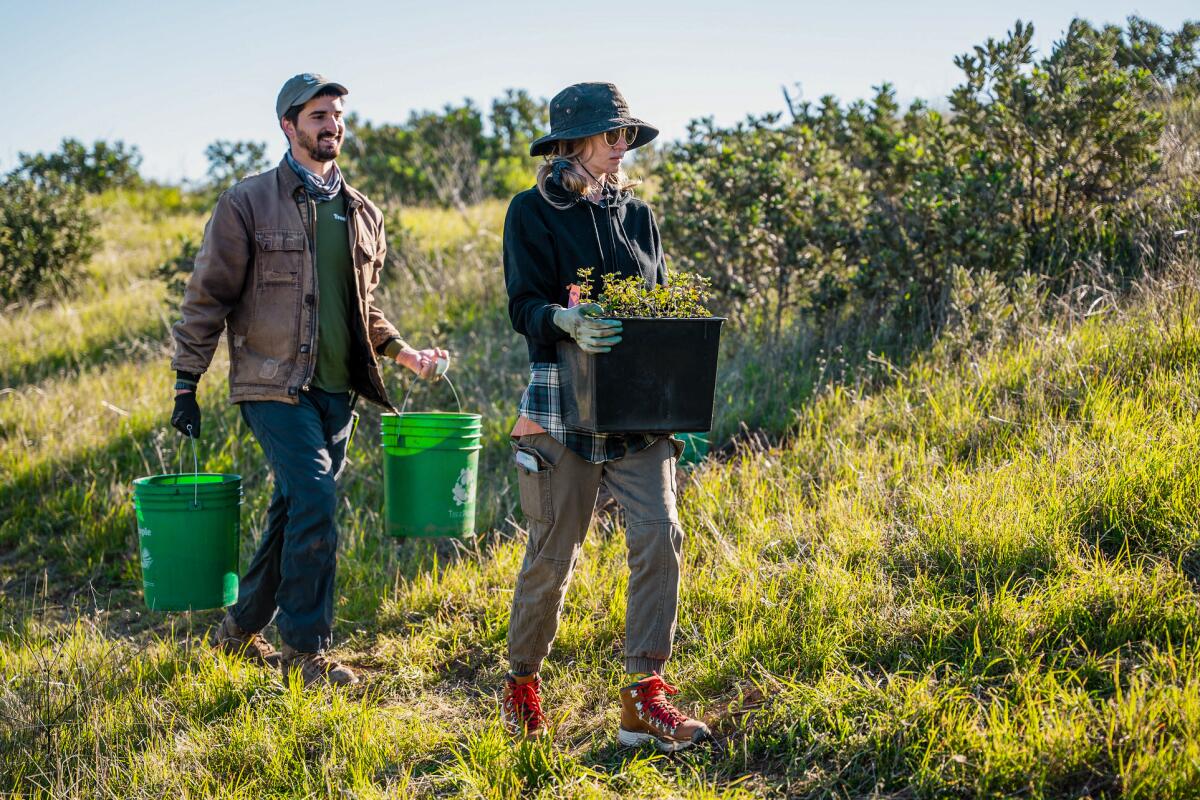
TreePeople
Education is another focus, with periodic workshops and online information about conservation and helping the environment. For instance, check out its concise “8 Principles to Rainwater Harvesting” on Instagram and its new downloadable starter guide, “Southern California Native Plants.” You can also visit its headquarters at the 45-acre Coldwater Canyon Park for hiking, picnicking or guided tours.
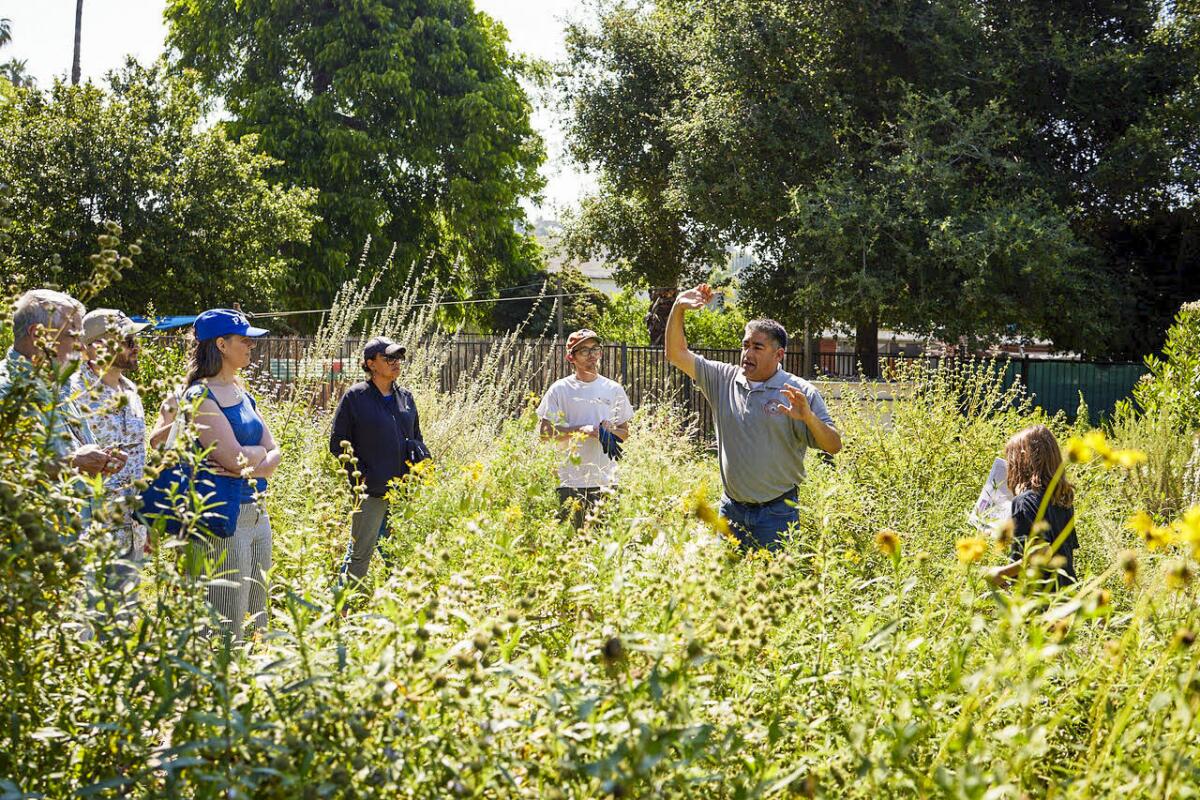
Wild Yards Project
Most recently he worked with volunteers to create a garden at Toland Way School in Glassell Park, where participants, including 35 volunteers, cleared an 1,800-square-foot lot, covered it with mulch and planted 200 native plants. Newsom’s projects happen from month to month; you can stay tuned by following him on Instagram.
Sign up for The Wild
We’ll help you find the best places to hike, bike and run, as well as the perfect silent spots for meditation and yoga.
You may occasionally receive promotional content from the Los Angeles Times.
